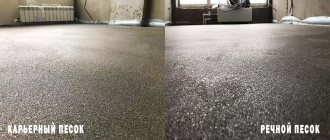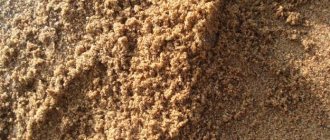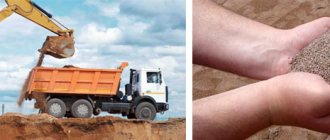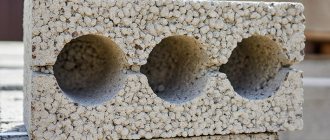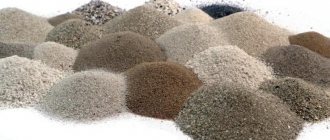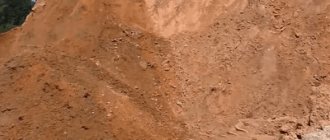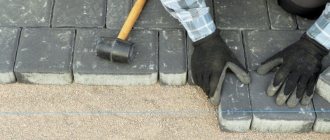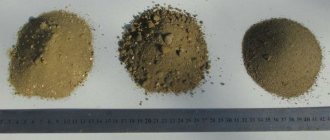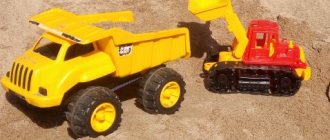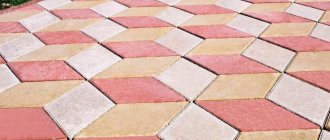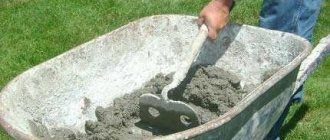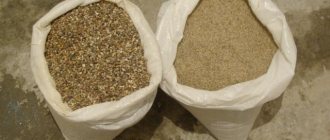Abrasive treatment (impact using repeated blows with sand shot) has long been recognized as one of the most effective methods for cleaning a surface before painting. However, the result will largely depend on what kind of sand was chosen for sandblasting. After all, to achieve the effect, you need to apply solid sand particles to the coating with a stream of air fed into a sandblasting machine under high pressure.
The key advantage of work performed using sandblasting is the ability to effectively impact any type of coating. They are widely used in construction when it is necessary to clean load-bearing metal structures and finished structures from rust and protect them from possible corrosion in the future. Another area of application is the decorative treatment of automotive surfaces.
Consumption of AP Cooperslag - "Cooper". Comparison with the consumption of quartz sand.
| Degrees of purification | AP Kupershlak - "Cooper" | Quartz sand | Saving abrasive |
| Abrasive consumption, kg. per 1 m2 | V % | ||
| Sa 1 | 10-15 | 15-26 | 50-70 |
| Sa 2 | 15-17 | 24-31 | 60-80 |
| Sa 2.5 | 17-21 | 29-40 | 70-90 |
| Sa 3 | 22-25 | 39-50 | 80-100 |
How to make abrasive with your own hands at home?
In some situations, it is not possible to purchase sand in a store. In this case, you can prepare the mixture for sandblasting on your own. It is permissible to take gravel sand as a basis; the manufacturing process includes several stages:
- preparing 2–3 sieves, made independently from a wooden frame and mesh with small cells;
- sifting sand to remove foreign debris;
- sifting to the desired fraction;
- drying the mixture after obtaining the required grain sizes;
- control sifting after drying using a fine sieve.
Let's consider traditional sandblasting with quartz sand.
When quartz sand particles hit the surface being treated, a large amount of fine dust, 15-30 microns in size, is formed. These are mainly quartz particles, but when using ordinary quarry sand, there will also be admixtures of clay and destroyed rocks (!). These particles become lodged in the recesses between the peaks of the treated surface. To remove them, mechanical action with brushes is required. Which entails additional costs of money and time, but does not guarantee an ideal result. Even a small residue of quartz will lead to accelerated corrosion of steel surfaces. This has been proven in practice. In the presence of crushed quartz particles, steel begins to rapidly corrode. Much stronger than after abrasive blasting with cooper slag. Applying paintwork only postpones the problem for some time, but does not fundamentally solve it.
Selecting sand for sandblasting
When choosing a material, it is important to take into account the nature of the work to be done. For example, to clean a tank from corrosion and for artistic work on glass, consumables of different fractions and hardness are required.
Other factors to consider:
- complexity of pollution. If the layer that needs to be cleaned is thick and durable, a coarse abrasive is needed. For soft surfaces, sand of low strength is more suitable;
- desired result. A large fraction gives a rougher effect than a small fraction. For delicate cleaning of copper products, a consumable with grains up to 0.3 mm is usually used. To remove paintwork without damaging the surface - from 0.3 to 0.6 mm. Rust is removed with medium sand - 0.6-1.16 mm;
- terms of work. A solid consumable with sharp edges will cope with cleaning faster than material of the same fraction, but with rounded grains.
Cooperslag - “Cooper” works where there is no need for “dust in the eyes”!
The use of abrasive powder Cooperslag - “Cooper” eliminates the problem of anti-dust treatment. Cooper slag is partially destroyed at the moment of impact with the surface being treated, unlike sand, which is destroyed almost completely, turning into dust. The tests have proven that after abrasive blast cleaning of the surface with Cooperslag - “Cooper”, the treated surface is practically not covered with abrasive residues. And those of them that still remain can be easily and almost completely removed by blowing the treated surface with compressed air. This operation is performed by the same sandblasting team, with little labor!
In accordance with the required technology for applying protective coatings from foreign and some domestic manufacturers, such as Ameron®, Hempel®, Teknos®, Tikkurila®, surface cleaning should be carried out by abrasive blasting using abrasive powders based on cooper slag. When preparing the surface with the above condition, these manufacturers provide a guarantee on their coatings for up to 10 years, and in some cases up to 20 years.
The above advantages of abrasive powder Cooperslag - “Cooper”, in comparison with sandblasting quartz sand, gives an uncompromising answer to the eternal question: “what is good, what is bad”...
Studying the characteristics
In pursuit of savings, people use ordinary sand from the street, without even knowing what harm they cause to the treated surface and the apparatus with which this treatment is carried out. In order to avoid such a “tragedy”, when choosing sand for sandblasting, pay attention to its quality characteristics:
- Hardness. Characterizes the resistance of the selected abrasive to destruction when another material with higher strength is pressed into it. The rating is given on a 10-point hardness scale, in which 1 corresponds to the softest material, talc, and 10 to the hardest, diamond.
- Fraction. Reflects the grain size of the material. In the product passport you can find information on the following items: minimum, maximum, complex and main fractions, as well as their percentage in the total volume. This parameter is very important, since it is closely related to the choice of nozzle, pressure in sandblasting and the surface to be treated.
- Abrasive ability. It is characterized by the amount of material/surface that can be processed within the allotted time standard.
- Mechanical resistance. The ability of a material to withstand specified mechanical loads without collapsing.
- Recovery. Reflects the possibility/impossibility of reusing sand after surface treatment.
- Chemical resistance. The property of sand to retain its basic properties when interacting with solutions of various types.
And finally, the clincher! Harm to health from sand.
Sandblasting using quartz sand is officially prohibited. In accordance with the decree of the Chief Sanitary Doctor of Russia dated May 26, 2003, sandblasting using dry sand is strictly prohibited!
Silicon dioxide and free quartz contained in quartz dust cause pulmonary silicosis. And not only for those people who directly sandblast (they are more protected than those around them), but for all people located near the sandblasting site. People within a radius of 100-300 m may fall into the potential risk zone, depending on the direction and intensity of the wind.
Pulmonary silicosis is an incurable, serious disease leading to death.
For comparison: in Europe, the use of quartz sand for sandblasting has been prohibited since 1966!
Which consumables are best to choose?
When choosing consumables for sandblasting, you need to take into account the characteristics of the surface for which it is intended to be processed. In this case, it is necessary to familiarize yourself with the specifics of using certain types of abrasives:
- Shot blasting. This method is economical and also effective due to dust suppression systems.
- Quartz. A material that is quite common due to its low cost and availability. Used to treat a wide variety of surfaces. When working with it, you must take care of the appropriate equipment.
- Nickel slag. The use of this abrasive allows you to obtain high-quality results. However, due to its high cost, it is purchased mainly for finishing surfaces made of expensive materials.
- Cooper slag. The material is well suited for working in open conditions.
- Metal shot. Makes it possible to initially imagine the final result after processing. This quality is due to the uniform surface of the abrasive. In addition, it increases the degree of adhesion of the material.
- Steel and cast iron shot. Abrasives are used to clean metal from carbon deposits. A greater effect can be achieved using crushed shot.
- Corundum. It is considered the most durable compared to other materials and allows for reuse. Recommended for decorative work with metal parts.
When choosing sand for sandblasting equipment, you also need to take into account the area of the surface being treated and its condition. Working with large fractions can damage the workpiece.
Main characteristics when selecting abrasive material
- Fraction is the particle size of the abrasive material. The division of abrasive materials into fractions is carried out by dispersing on special sieves; the sieve number indicates the grain size. The documents for abrasive material specify the following parameters: limit fraction, largest fraction, base fraction, complex fraction and finest fraction and their ratio in percentage. The fractional composition of the material is most often in the range from 0.125 to 4 millimeters and its choice is of particular importance when selecting an abrasive. The choice of fraction will depend on the material of the surface being processed, the diameter of the nozzle and the pressure used in the apparatus.
- Hardness is the ability of an abrasive not to undergo destructive processes when another material with a higher hardness is pressed into it in a specialized installation. The degree of hardness of an abrasive material is described on a hardness scale of ten classes, natural material is used as standards. The 1st class includes soft materials that are comparable in hardness to talc, the 2nd class - gypsum, the 3rd class - calcite, the 4th class - fluorite, the 5th class - apatite, the 6th class - field spar, 7th class - quartz, 8th class - topaz, 9th class - corundum, 10th class - diamond.
- The abrasive ability of a material is determined by the area of the surface being treated over a standard time period.
- Mechanical resistance is the property of abrasive materials to withstand mechanical loads during use without being destroyed. It is determined by the level of compressive strength, which is determined experimentally by crushing the abrasive grain, while recording the load force at the time of the onset of its destruction.
- Chemical resistance is the ability of an abrasive powder not to change its basic properties when in contact with water, as well as with solutions of alkalis, acids and various solvents.
It is mandatory to use personal protective equipment
How does a sandblasting gun work?
If you decide to use a sandblasting gun for the first time, it will not hurt to first understand the question of its operating principle. Knowing the principle of operation of the nozzle, it will not be difficult to learn how to use it. First, let's find out how a sandblasting gun from a compressor works:
- The gun is connected via a hose to the compressor through the receiving fitting
- The air enters a special chamber where its pressure can be adjusted
- The air is directed through the channel to the nozzle
- Due to the passage of air through the channel, sand and abrasive are sucked from a special container (due to the pressure difference)
- The amount of sand sucked in by air can also be adjusted with a special screw, which depends on the tool manufacturer
- Not only compressed air is supplied through the nozzle, but also sand with abrasive particles, which have a cleansing effect on the surface
The operating principle of the tool is somewhat similar to the functioning of a spray gun. Often these two tools are used simultaneously when performing paintwork. Initially, the surface is cleaned and then painted. Moreover, this applies not only to car bodies, but also to various structures on the farm, for example, gates, fences, poles and others.
Types of abrasives
When selecting sand for a sandblasting gun or another type of abrasive, you need to take into account the basic properties and characteristics of the latter in order to carry out the work with maximum efficiency.
Quartz sand
It is quartz sand that is most in demand on the market for sandblasting and grinding products. It is characterized by a low price, decent quality, and is sold everywhere. Quartz sand is made from white quartz by crushing it into different fractions:
- up to 0.1 mm;
- 0.10–0.4 mm;
- 0.5–1 mm;
- more than 1 mm.
The sand undergoes thorough screening, so larger particles are practically not found in its small fractions, and sandblasting can be done without harm to the product. The material has good durability and abrasive ability, especially considering its availability. Sand will not damage delicate products or non-ferrous metals. Waste quartz sand after sandblasting can be sold as a building material.
A significant disadvantage of sand is the release of a large amount of dust, which enters the worker’s lungs and eyes, which is harmful to his health. With the regular use of sand for such grinding in the absence of personal protective equipment, a deadly disease can develop - silicosis. To avoid such problems, all equipment should be equipped with dust removal systems, and each batch of sand should be used no more than 1-2 times.
Cooper slag and nickel slag
These abrasive materials are obtained by processing slag from nickel and copper production. They are considered reusable, economical and more effective than quartz. The particle strength, hardness and abrasive ability of cooper slag is higher than that of nickel slag. Such materials can be used up to 3 times without the risk of dust.
The use of these abrasives is advisable when cleaning expensive and complex structures, which is associated with the high quality of the result, but also with the price of materials. Cooper slag and nickel slag are capable of cleaning the most durable types of metal and concrete; they do not crush along with plaque due to their high strength.
Metal (technical) shot
This material is small metal balls made from steel or cast iron. Technical shot can be cast, chopped, chipped, with the first having a spherical shape, and the rest being acute. Steel and cast iron shots are used for shot blasting and shot blasting of products that require notching (profiling) or descaling. This purpose is associated with the high strength of the materials and the presence of sharp-angled edges on their particles. After treatment, the metal base will have a high degree of adhesion and adhere perfectly to finishing coatings.
Steel shot is of good quality - it is the hardest, has the highest strength characteristics, can be used several times, and does not cause dust. The increased service life is due to additional heat treatment of the shot during its production. Stainless steel shot is used for processing structures made of the following materials:
- steel;
- zinc;
- titanium;
- aluminum;
- copper;
- bronze;
- brass;
- concrete;
- granite;
- marble.
Corundum
This material is prepared on the basis of aluminum oxide and is considered one of the most durable abrasives. Its particles are in the form of crystals, and their characteristics are close to diamond. The price of the material is high, which is why it is used for processing mainly expensive products. Corundum can be reused many times. It is ideal for decorative sanding and polishing of surfaces.
A variety of corundum is electrocorundum - a super-strong material obtained by adding a number of impurities to aluminum oxide. Its particles are not damaged at all during processing of materials, therefore repeated processing can be carried out a large number of times (after sifting). On the Mohs scale, electrocorundum is only one position inferior to diamond, it is so hard. Its grains have sharp edges and have the unique ability to sharpen themselves.
see also
Comments 36
Where there are oil fields, companies operate that engage in hydraulic fracturing. Here they have quartz sand. In bags of a ton. Pure! He's worth nothing to them. You can ask for another bottle and they will give it to you without any problems. How much can you carry? But there’s just one problem... Not everywhere there are oil and gas fields)))
well...you and I have oil in the region 
Accordingly, you don’t have to go to the beach for sand!
150-200 meters away from the house and the beach is already... My garages are also on a sand embankment, almost everything with you is on the sand.
Gentlemen! Do you even know about the disease called “Silicosis”?
Even without Silicosis, I have had problems with my lungs since childhood...my entire region is built on sandstones and quarry embankments
I have been to Khanty-Mansi Autonomous Okrug and Yamal-Nenets Autonomous Okrug, and traveled around for work. Conducted anti-corrosion treatment.
Well, that means you know that we have enough sand in our cities and in the fields... and I visited you at the EKB, served in the army in your 32nd military town on the outskirts of the city and in V. Pyshma, so in the fall you have to dig acops or trenches so this is something.
our guys use quartz sand, there are places
They brought us pure Finnish here at the bottom. I can fit it at a reasonable price
Cool))))) I go to the sea to the beach for sand, in the summer)))) the faces of vacationers are somewhat surprised when you sit in the sand and collect the top “hot” layer of sand into bags)))))
One of my friends also collected sand into a cart on the shore, the police drove up, looked and said, “If everyone takes a bucket of sand, then what will be left for the people.”
Well, the cops are right, but buying quartz at an inappropriate price is also nonsense
Cool))))) I go to the sea to the beach for sand, in the summer)))) the faces of vacationers are somewhat surprised when you sit in the sand and collect the top “hot” layer of sand into bags)))))
Isn't the sand from the sea salty? Probably the metal will immediately turn sour?
I sand with sea sand, everything is fine. Does not rust. Even without covering with soil it stands normally. What’s interesting is that sand is only suitable from one beach))
with what? I'm leaving.
I think it's too far for you)
Isn't the sand from the sea salty? Probably the metal will immediately turn sour?
Well, I haven’t tasted it))) I take it away from the water, after processing it doesn’t seem to hang...
And I use career...
And we use quarry sand. It cleans very well before shot blasting. It’s just that some parts are not intended for sand blasting and that’s why there are complaints. And if corrosion has already eaten up most of the part, then sand blasting is of no use when there is nothing to sand blast.
I recently gave my wheels to be sandblasted, the first one. the disk was made with quartz, the floor was learned very roughly (what now needs to be done, sanding and sanding?) and the other three with sand, more or less evenly.
Give it to powder paint and everything will be fine, the powder paint itself will fill these potholes
I wanted to try painting it myself (there is a primer for non-ferrous metals + paint, varnish) with a spray gun. Powder is expensive, the wheels will come out “golden”.(
There is liquid putty... It might help...
What kind of putty is it, what is it intended for? Will it stick to the casting? What is the order - first the primer, then the putty, or vice versa? Have you done this yourself, do you have any experience? It’s just not possible to sand it? (It’s very rough there, I think a lot needs to be removed). I just don’t want to redo it.))
Liquid putty is used as a finishing putty... That is, it is sprayed over the rough putty. I think if you put it on the ground, it will hold. You can read it here: autoclub.su/avtomobilnaya-shpaklevka-cena/. Section “Finishing liquid putty for work on car bodies: high-quality finish.”
You're welcome.) If only for the benefit))
There are options for treating parts with soda... And nothing - it cleans... Yes, not so well, and slower, but there is practically no damage to the metal... So quarry sand is good for this, the main thing is that there is not a lot of clay there...
Yeah, try to get some fine river sand in Moscow... it’s cheaper and easier to buy quartz
The Stroginsky bays used to be sand quarries, there is still a lot of sand left there :)
Well, yes))) and you can get some money in Krylatskoye)
In Voronezh I use sand from a reservoir, I don’t use any cleaning “sieve”, it’s already good and fine...
People who have encountered industrial sandblasting to one degree or another cannot imagine a household installation. And people who do not know the industrial part will silently like the cleanliness of the details. Although there are also industrial installations using river sand, they are used after heat treatment, also with electromagnets installed in the chamber that collect metal particles, be it scale or rust. Sandblasting, even on this site, is a highly specialized question, and even if 1000 people object in the comments, as a percentage of the total number this is a small part
Preparation of river sand for sandblasting
As preparation measures, the sand should be thoroughly dried and sifted. It must be completely dry before loading into the sandblaster, otherwise the device may be damaged. The permissible level of humidity is determined by squeezing the material with your hand - it should flow freely through your fingers. The sand fraction must ideally match the size of the nozzle, which is achieved by sifting on sieves with cells of the required size.
How to sift sand for sandblasting?
To clean sand at home, you can use improvised means - tulle, gauze, flour sieve, mosquito net. The main thing is to sift the abrasive several times so that it is of high quality, uniform in particle size and does not include foreign impurities.
How to dry sand for sandblasting?
The easiest way to dry the sand is in a special drum dryer. The installation has a convenient drying chamber and a built-in sieve, so the time and effort required to prepare the abrasive will be minimal. If such a device is not available, you can dry the sand over the flame of a fire. To do this, a sheet of metal, an iron box, or another metal container is fixed above the fire, where the sand will be located. Some craftsmen dry the material using a heat gun, scattering it on film. This is convenient and easy to do, and the quality of the finished abrasive will be at a decent level.
